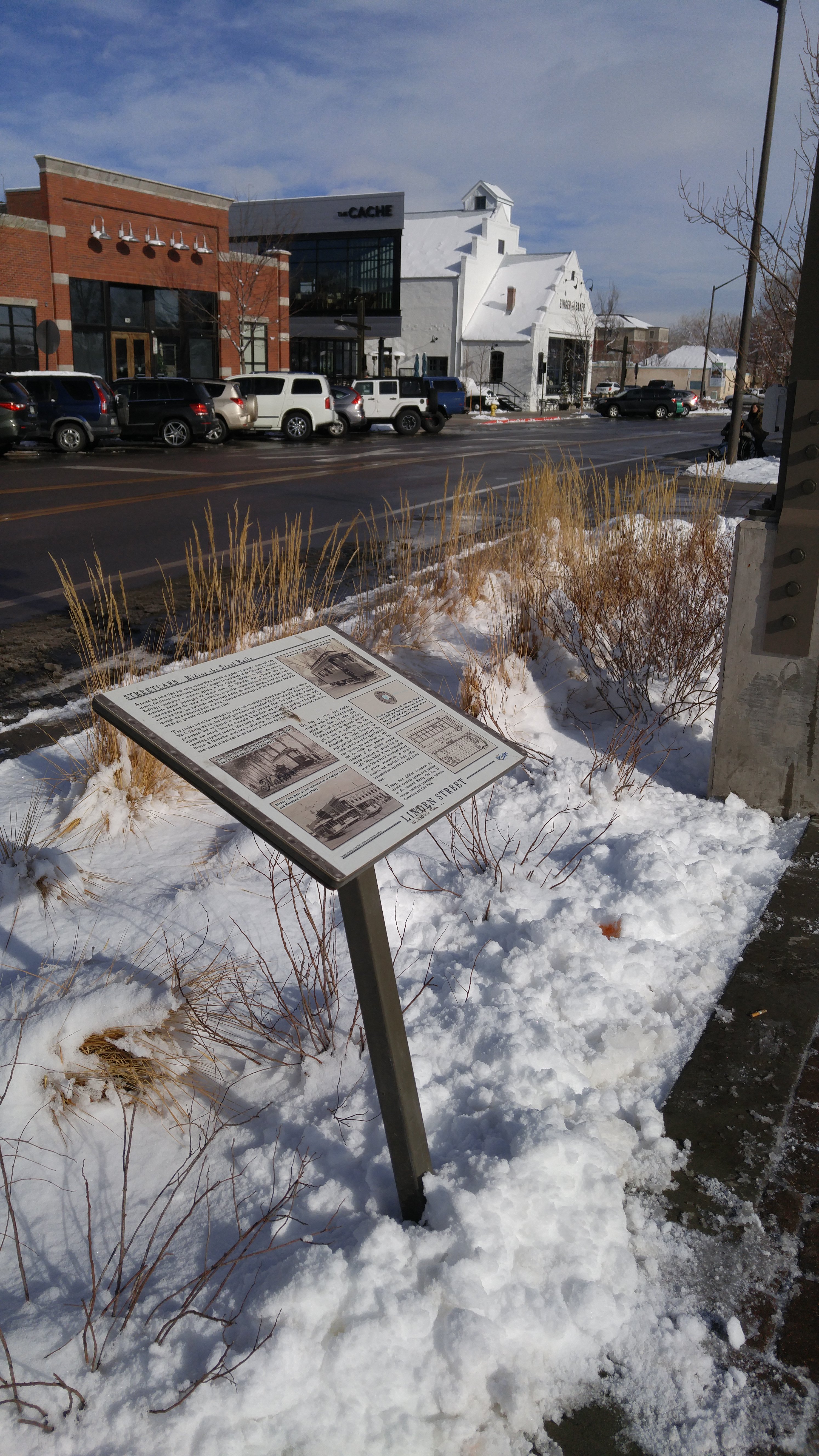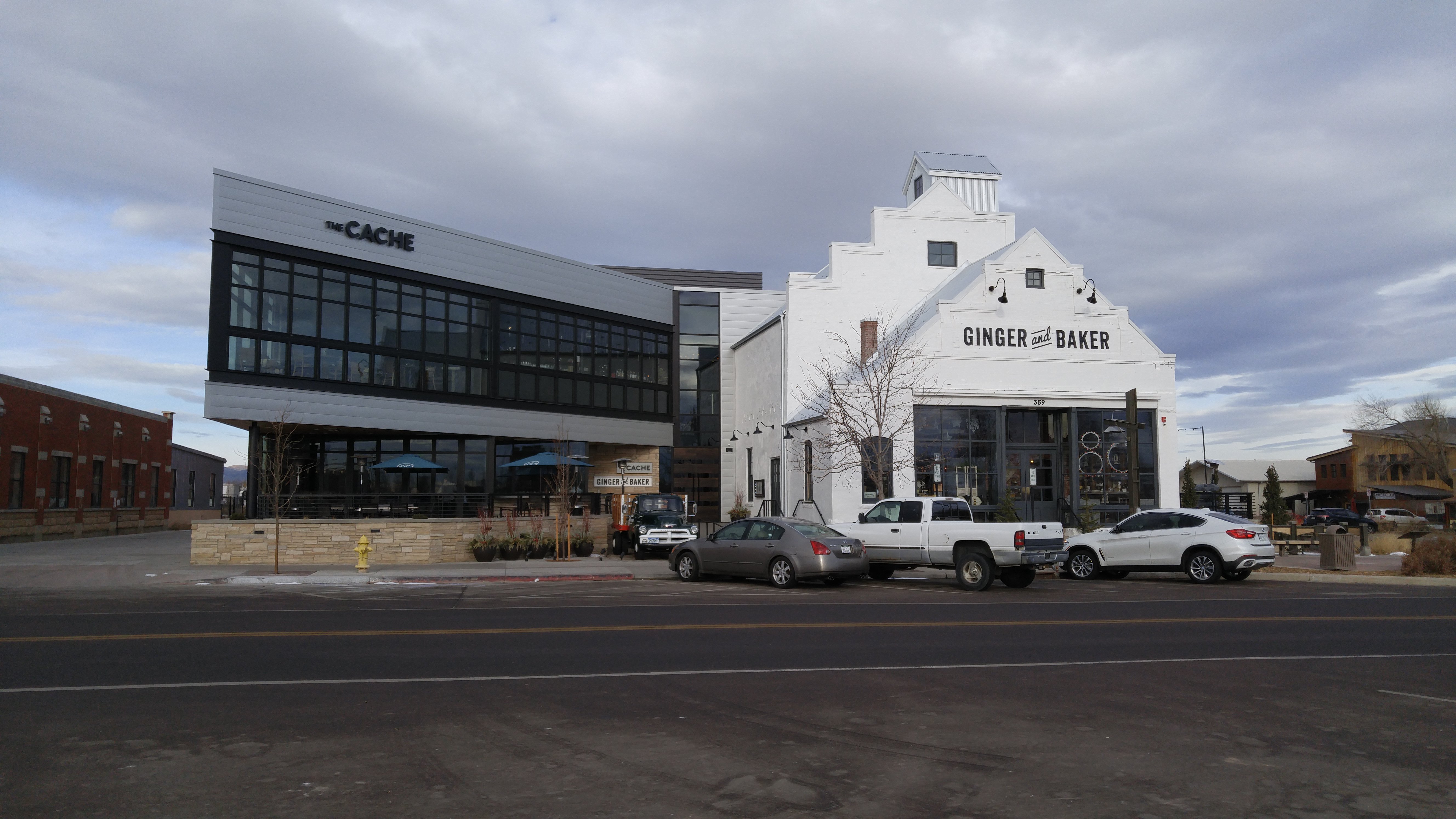
Story
Wishful Thinking: Transforming a Building and a Neighborhood in Fort Collins
From Camp Collins to Fort Collins, the Old Town neighborhood is home to some incredible history.

Recently installed signs and sidewalk pavers set a historical context for new businesses such as Ginger and Baker in Fort Collins’ Downtown River District.
A buried secret
Back in 1864, when the U.S. Army set up a riverside outpost near what is now Fort Collins’ Old Town neighborhood, the military installation was known as Camp Collins, and it quickly became a meeting point for a growing number of homesteaders. When Camp Collins flooded in 1864, a new military post was built. Accounts differ as to whether the new post was a proper "fort" or not. It's possible the locals simply called it a "fort" to attract more attention to the area in an act of wishful thinking.
Whatever the case, the camp was abandoned in 1866 and decommissioned in 1867, leaving the town to grow without its former military presence.
Today, there’s no physical trace of the old Camp Collins. Close to the center of what used to be the parade grounds there’s an unlit, gravel-covered vacant lot where I was happy to find parking a few nights ago. But while the old Camp Collins is long gone, there’s a similar sense of wishful thinking going on here today. These few blocks, located between Fort Collins’ popular Old Town Historic District and a scenic but underutilized section of the Cache la Poudre River, are getting a facelift that’s likely to transform the neighborhood in the next few years, driving economic growth while highlighting the area’s historical significance.
From grain elevator to pie shop
The City of Fort Collins started this process a few years ago with street-level improvements and historical markers, adding details such as fence panels inspired by the U.S. Cavalry’s crossed-sabre insignia. The makeover took another big step forward late last year when a 107-year-old former grain elevator and animal feed supply building reopened as a dining hub. Called Ginger and Baker, the expanded and renovated building now includes retail space, a coffee-and-pie shop, two restaurants, a teaching kitchen, event spaces, and a rooftop bar. The original building, which is listed in the National Register of Historic Places and the Colorado State Register of Historic Properties, was lovingly restored with much of the old equipment, building materials, and period details carefully salvaged and integrated into the walls, furniture, and artwork. As if that wasn’t enough to honor the building’s past, historic photos of the building and the neighborhood can be found throughout the building. According to owner Ginger Graham, she and her husband Jack “fell in love with this old building, which was once a gathering place for farmers, ranchers, and townspeople. We wanted to create a place where Fort Collins families, friends, and community could get together again.”
But because of the building’s historic status, the Grahams couldn’t make some necessary upgrades, such as modern heating, air conditioning, or an elevator. Luckily, there was an empty lot next door. The solution was to build a new, two-story restaurant building that had all the necessary amenities, and then connect the upgrades to the historic building via hallways, a ventilation system, and some creative electrical engineering.

Following a lengthy renovation, a historic grain mill and feed supply store in Fort Collins is now a dining hub in an up-and-coming neighborhood.
A minor miracle
This is where Fort Collins’ Historic Preservation department got involved. According to Maren Bzdek, Fort Collins senior city planner, “We provided technical and regulatory guidance for what would be approved in terms of alterations and the addition in terms of state requirements for adaptive reuse and compatibility and context with the neighborhood.”
The two connected buildings—built more than a century apart—are a dramatic expression of historic and modern building styles, as well as of creativity and determination. To put it mildly, the process wasn’t easy. Bzdek explained, “It’s a strong architectural statement and it was challenging from a budgeting and technical perspective. There were pulleys, catwalks, wooden grain bins, and a molasses pit in the basement, which is now the wine cellar. It’s sort of miraculous that this project was completed.”
Was it worth the effort? Bzdek believes so. “There’s really nothing else that compares to it in Fort Collins,” she said, “although that kind of building combination is pretty common in a lot of communities. But the way the new building is angled and recessed, it highlights the historic building. And the historic side of the building captures a great deal of its historic character even though it’s been incredibly transformed. You definitely know that you’re in an old building.”
And, as a tip of the hat to the Grahams’ original and more modest business concept, the new addition is shaped like a slice of pie.
Economic Development: Reimagining the River District
Other projects planned for the old Camp Collins neighborhood—officially known as the Downtown River District—include condominiums, restaurants, pedestrian areas, and a distillery. All of this is a short walk to the river and a whitewater park that’s expected to open in summer 2019. It’s one of the most active commercial redevelopment areas in Fort Collins. In Ginger’s view, “Expansion of Old Town toward the river is a great opportunity in several ways, including the possibility of creating something special like the waterfront in Indianapolis.” She expects the transformation to be complete in a few years.
Fort Collins’ economic health director Josh Birks is similarly optimistic. “The River District represents a unique set of opportunities,” Birks said, adding, “We’re seeing entrepreneurs drawn to a balance between the natural and built environment, which is also what employers in general say they love about Fort Collins. Ginger and Baker represents another investment in the River District that’s transforming the area.”
Today, as you peer down from the upstairs dining room at The Cache into the lumberyard across the street, it’s easy to notice the neighborhood’s industrial past and to wonder what the future holds for the neighborhood. Ginger’s timeline feel ambitious… but it makes sense. The adjacent Old Town commercial and entertainment district is more than a picturesque collection of streets and businesses; it’s a local economic driver that helps bring in more than $240 million in tourist dollars every year. The neighborhood is designated nationally and locally as a historic district, and it was an inspiration for the Main Street, U.S.A. areas in Disneyland theme parks around the world. Extending this pedestrian-friendly district a few blocks to a scenic waterfront would have many benefits, one of which is reconnecting locals and visitors with the riverfront and with one of the most historic areas in town.
A volunteer blogger for History Colorado, Brian Cooke has worked as a writer and editor for more than 20 years. His past volunteer work has included leading night tours on Alcatraz and writing for the National Park Service and Visit Fort Collins. Brian currently writes for a market research firm and as a freelance science and environmental writer. His LinkedIn page is www.linkedin.com/in/bcooke1.
